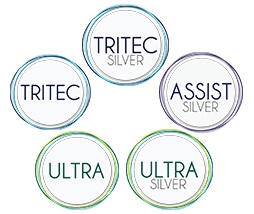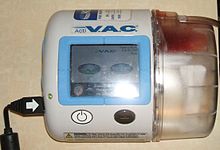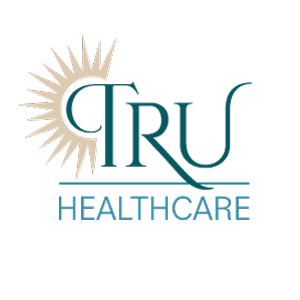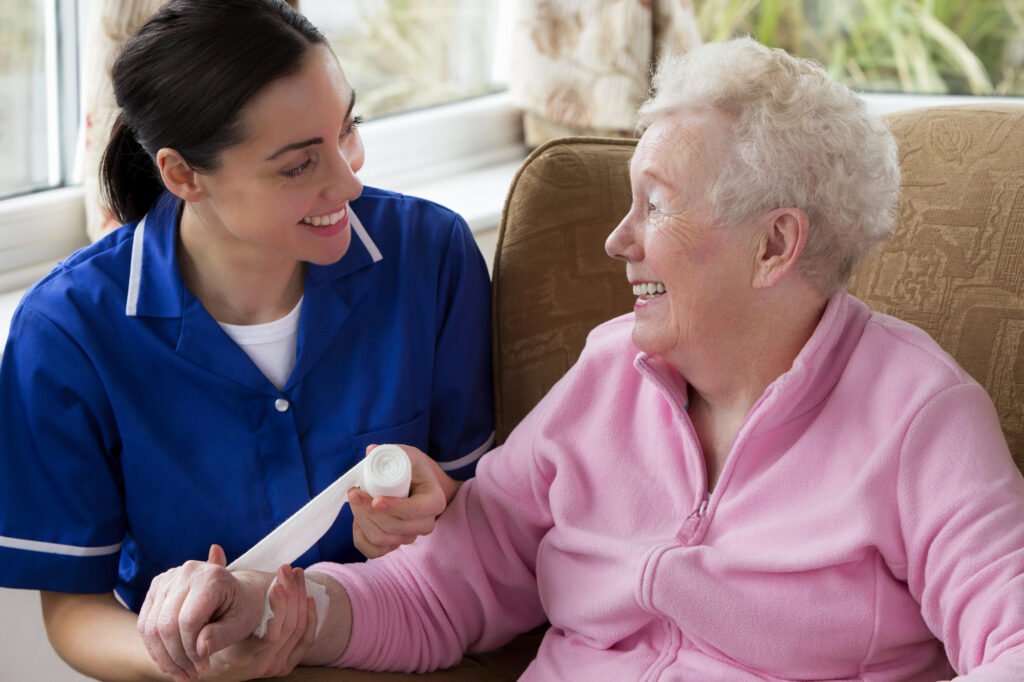At HealthStar Home Health, our team of caregivers, which includes nurses, case managers and therapists provide services that help people stay at home in familiar surroundings, develop good health habits and reduce hospitalizations. One of the skilled services we provide is in-home wound care. Providing good wound care and wound care education plays an essential in role in assuring a faster recovery time with reduced risk of complications. HealthStar Home Health uses a team approach including registered nurses, home health aides and physical and occupational therapists along with the latest evidence based practice to promote wound healing and prevent complications.
There are various types of wounds and methods to treat them. Our HealthStar team knows that each wound is unique, and realizes the importance of staying on top of the latest care techniques and treatments so they are prepared for anything. Here is some information about the more commonly treated types of wounds:
Pressure Ulcers (bed sore): Pressure ulcers are injuries to skin and underlying tissue resulting from prolonged pressure on the skin and usually develops on the skin that covers bony areas of the body, such as the ankles, heels, hips and tailbone. Pressure ulcers can develop quickly and are often difficult to treat. Pressures ulcers left untreated can cause serious health complications such as sepsis, cellulitis and bone and joint infections. Pressure ulcers are diagnosed in stages and the treatments vary depending on the stage. We work with the client’s primary physician and/or wound care clinics to assure best practices and treatment. Under the direction of the physician, we can provide hands on assistance with dressing changes and teach different techniques to promote wound healing. We also provide other hands-on assistance and education regarding pain management, antibiotics, nutritional education for promoting wound healing and managing incontinence. Some physicians will order Wound Vac Therapy to promote quicker healing.
Diabetic Ulcers: A diabetic foot ulcer is an open sore that occurs in approximately 15% of diabetic patients and is commonly found at the bottom of the foot. Of those who develop a foot ulcer, 6% will be hospitalized due to infection or other complication related to the foot ulcer. Nutrition and hydration are keys to preventing diabetic ulcers. Staying on top of diet and hydration will also help control the diabetes. If you are treating a foot ulcer, cleansing the wound daily is important to prevent infection, other complications or even hospitalization. Research has shown that developing diabetic ulcers is very preventable, but if left untreated or symptoms are ignored, the foot ulcer can lead to more serious conditions or even amputation.
Stasis Ulcers: A stasis ulcer is an ulcer that develops in an area of the body where circulation is sluggish and the return of blood to the heart is poor. Stasis ulcers commonly develop on the ankle when fluid leaks from the veins into skin tissue when the blood backs up rather than returns to the heart through the veins. To prevent a stasis ulcer, be sure to elevate the legs to relieve the edema (swelling caused by excess fluid build-up).
Surgical Wounds: A surgical wound is a cut or incision on the skin made during surgery. Sometimes a drain needs to be placed during surgery and this is also considered a surgical wound. They are usually closed with sutures or staples but occasionally left open to heal. We assist and teach signs and symptoms of wound infection such as excessive and foul smelling drainage, increased pain or warmth. We can also remove the sutures and staples when needed.
Treatment:
Much attention is given to preventing such injuries and ulcers, but even with stringent prevention techniques, ulcers and wounds still occur and need to be cared for properly. There are various treatments and techniques HealthStar Home Health uses to treat wounds. Our care team follows evidenced based practice, which follows the principals of moist wound healing. Since not all wounds are alike and treatment needs to address the unique characteristics of the wound and the needs of the client, the first step is a comprehensive assessment. Following the assessment the clinician in collaboration with the physician determine the proper treatment and dressing to achieve optimal wound healing. 
In addition, all of our nurses are specially trained to provide Wound VAC Therapy, which promotes wound healing through negative pressure. 
Home health care for wounds is covered by many insurance plans. HealthStar Home Health can assist with contacting your insurance companies to see what type of coverage you have available for these types of services. For Medicare beneficiaries, who meet the qualifying home health criteria, i.e.: homebound, Medicare will cover clinicians to come to your home to provide wound care and the required supplies.
HealthStar Home Health practices a team approach to patient care, led by an RN who will coordinate the necessary disciplines. They know the importance of collaboration, communication, and including the family in training and discussions to ensure they provide the best care for your loved one.


